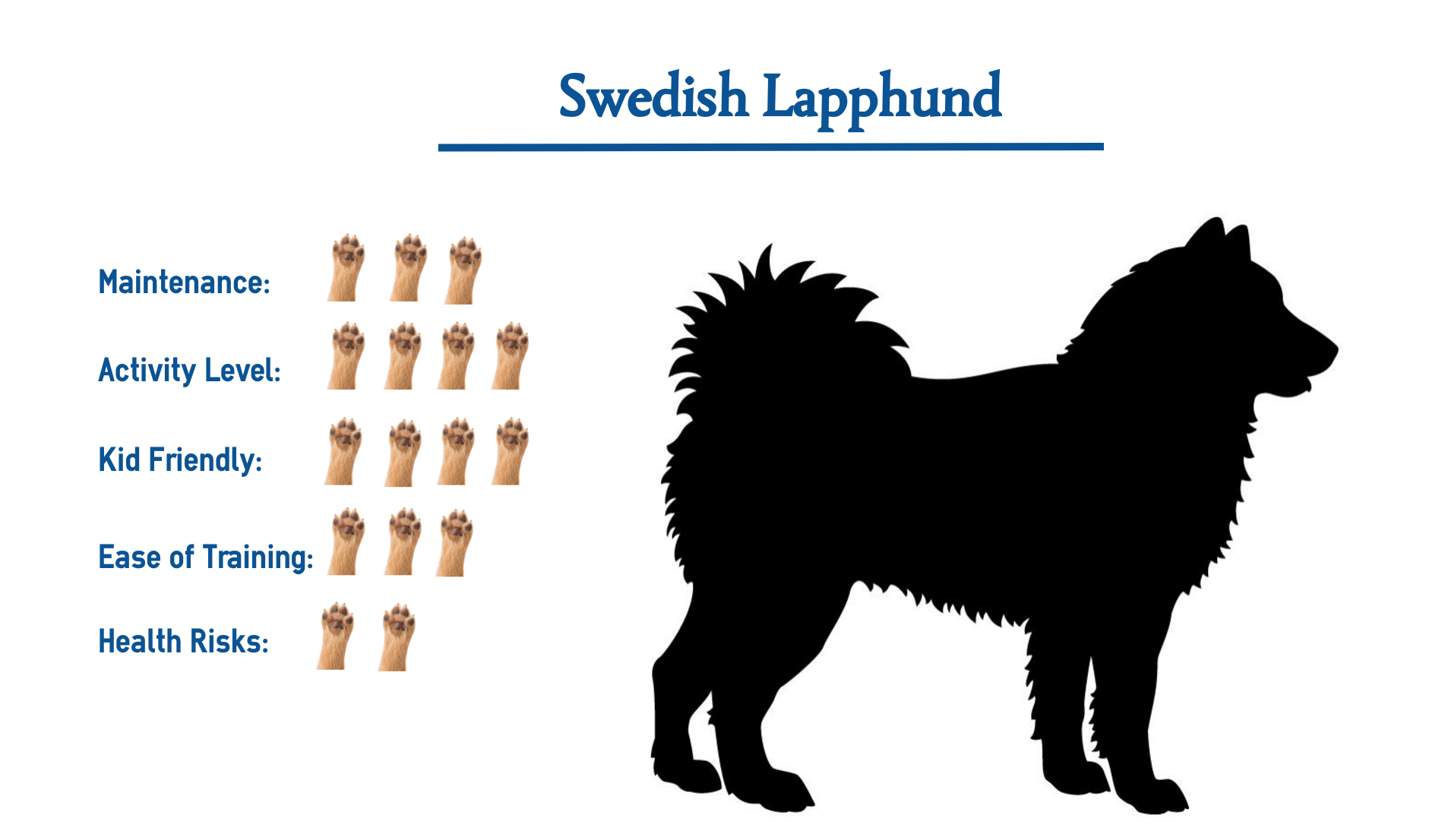If you’ve ever seen a Swedish Lapphund, you know this is one adorable pup. His face is soft and gentle, but his spirit is strong and alert. And hey… let’s face it, that’s a great combo for a dog, as you probably know.
Which is probably…
Why do a lot of folks like to make Swedish Lapphunds their pet? But as you know, only some dog breed suits some families and living situations. This is why in this article, we wanted to take a moment and discuss exactly what it might be like to own one of these unique animals so that if you’re ever allowed to make one of them your own, you’ll know if it’s a good idea or not.
So, without further ado, let’s dive right in!

Swedish Lapphund Fast Facts
Country of Origin: Sweden
Original Purpose: Herding and tracking
Height: 15-20 inches at the shoulder
Weight: 40-48 pounds as an adult dog
Dog breed Classification: Not officially recognized by the American Kennel Club (AKC)
Lifespan: 10-14 years
Origin of the Swedish Lapphund Dog Breed
This Scandinavian hunting dog originally comes from Sami and even has a place in Sami mythology. This working dog has been a hunter and guard dog for the Sami people. It wasn’t until the 18th century that this dog became a herding dog.
Back then…
They were mainly used as reindeer herders (yes, they’re real animals!). As you might suspect, reindeer herding is some serious work. If you’ve ever been to northern Scandinavia, you know the land is barren and the terrain rough. As a result, this dog is sturdy and robust, with a resilience not all dogs have.
Physical Characteristics
This dog is a smaller medium-sized dog that is dark in color. He looks black to most people but is probably a very dark brown. He’s very alert and thus looks like he’s standing tall and confidently! He’s vital for his work, and his coat is well-prepared for Swedish & Finnish snow.
His waterproof…
The double coat is soft underneath but a bit rougher on top. His fur is rather long and needs to be brushed, but it won’t take much work. You will need to brush more during the shedding periods unless you don’t mind dog fur all over your house. Occasionally, you’ll find a Lappi with two colors. Also, please note that great bushy tail!
Personality and Temperament
This lively dog is an excellent dog for the family. He’s friendly with his squad but may be disinterested in strangers. But that’s okay! He’s not the quietest dog on the block, so if you have fussy neighbors, that will be something to consider. The good news is you can teach a Swedish Lapphund puppy to behave better, and they’ll figure out when it’s the right time to bark. Like most dogs, puppies are way more trainable than any adult dog. The best way to train is with positive reinforcement techniques.
Now since this…
The dog was initially bred to work; he will need adequate play and exercise time; otherwise, he’ll get beyond restless. 20-40 minutes every day should be sufficient. Without this, you may find things in your house getting torn up. This isn’t because he’s badly behaved – you’re not giving him an excellent way to get energy out of his system.
Potential Health Concerns
The best way to ensure your Swedish Lapphund is healthy is to get them from a renowned breeder. The Swedish Kennel Club or Federation Cynologique Internationale can recommend some recognized breeders for you to choose from. When you go with a reputed breeder, they will follow a breed standard. As a result, your dog will come from a better gene line and thus have fewer health problems.
Of course…
Like humans, even the best bloodline can still have health problems, either congenital or from an accident or contracted. They are more prone to diabetes and progressive retinal atrophy. And like we said, any accident could happen.
Swedish Lapphund Costs
Getting a Lapphund puppy will cost about $400-800, which is a lot, but it’s nothing compared to what your annual healthcare costs could be if they need treatments.
If your dog has a health problem, then there are going to be certain costs associated with medical care and vet visits.
Here are some sample medical costs:
- Diabetes: $500-1000/year for insulin alone,
- Progressive Retinal Atrophy: $150-2000 (big jump, we know!).
And while many of these conditions may not be life-threatening, they can become quite expensive, particularly if they become recurring issues. This is why we here at IndulgeYourPet also recommend that any new pet owner take a moment and see what it might cost for you to purchase a pet insurance policy for your new animal.
Now will a pet insurance policy be suitable for everyone?
No, probably not. But until you fully understand what these policies “will” and “won’t” cover and how much these pet insurance policies cost, how will you know if one might be right for you?
For more information on who we feel currently offers the “best” pet insurance policies out there, we would encourage you to check out our Best Pet Insurance Policies article.



